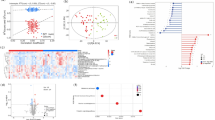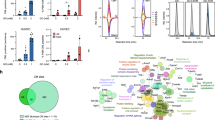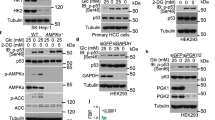Abstract
We previously reported that photodynamic therapy (PDT) using Purpurin-18 (Pu-18) induces apoptosis in HL60 cells. Using flow cytometry, two-dimensional electrophoresis coupled with immunodetection of carbonylated proteins and mass spectrometry, we now show that PDT-induced apoptosis is associated with increased reactive oxygen species generation, glutathione depletion, changes in mitochondrial transmembrane potential, simultaneous downregulation of mitofilin and carbonylation of specific proteins: glucose-regulated protein-78, heat-shock protein 60, heat-shock protein cognate 71, phosphate disulphide isomerase, calreticulin, β-actin, tubulin-α-1-chain and enolase-α. Interestingly, all carbonylated proteins except calreticulin and enolase-α showed a pI shift in the proteome maps. Our results suggest that PDT with Pu-18 perturbs the normal redox balance and shifts HL60 cells into a state of oxidative stress, which systematically induces the carbonylation of specific chaperones. As these proteins normally produce a prosurvival signal during oxidative stress, we hypothesize that their carbonylation represents a signalling mechanism for apoptosis induced by PDT.
Similar content being viewed by others
Log in or create a free account to read this content
Gain free access to this article, as well as selected content from this journal and more on nature.com
or
Abbreviations
- anti-DNP:
-
anti-2,4dinitrophenol antibody
- CHAPS:
-
3-[(3-cholamidopropyl)dimethyl-ammonio]-1-propane-sulphonate
- 2-D:
-
two-dimensional gel electrophoresis
- DCFH-DA:
-
2′,7′-dichlorofluorescein diacetate
- DMSO:
-
dimethylsulphoxide
- DNPH:
-
2,4-dinitrophenylhydrazine
- Δψm:
-
Mitochondrial Transmembrane Potential
- DTE:
-
dithioerythritol
- DTT:
-
dithiothreitol
- FACS:
-
fluorescence-activated cell sorter
- FCS:
-
foetal calf serum
- GSH:
-
reduced glutathione
- HEPES buffer:
-
N-[2-hydroxyethyl]piperazine-N’-[2-ethanesulphonic acid]
- OPT:
-
o-phthaldialdehyde
- PBS:
-
phosphate-buffered saline
- PDT:
-
photodynamic therapy
- PI:
-
propidium iodide
- Pu-18:
-
Purpurin-18
- Rhod123:
-
Rhodamine123
- ROS:
-
reactive oxygen species
- SDS:
-
sodium dodecyl sulphate
References
Thompson C (1995) Apoptosis in pathogenesis and treatment of disease. Science 267: 1456–1461
Kiechle FL and Zhang X (2002) Apoptosis: biochemical aspects and clinical implications. Clin. Chim. Acta 326: 27–45
Thornberry NA (1998) Caspases: key mediators of apoptosis. Chem. Biol. 5: R97–103
Hengartner MO (2000) The biochemistry of apoptosis. Nature 407: 770–776
Colussi C, Albertini MC, Coppola S, Rovidati S, Galli F and Ghibelli L (2000) H2O2-induced block of glycolysis as an active ADP-ribosylation reaction protecting cells from apoptosis. FASEB J. 14: 2266–2276
Chandra J, Samali A and Orrenius S (2000) Triggering and modulation of apoptosis by oxidative stress. Free Radic. Biol. Med. 29: 323–333
Dougherty TJ (2002) An update on photodynamic therapy applications. J. Clin. Laser Med. Surg. 20: 3–7
Ahmad N and Mukhtar H (2000) Mechanism of photodynamic therapy-induced cell death. Methods Enzymol. 319: 342–358
Lam M, Oleinick NL and Nieminen AL (2001) Photodynamic therapy-induced apoptosis in epidermoid carcinoma cells. Reactive oxygen species and mitochondrial inner membrane permeabilization. J. Biol. Chem. 276: 47379–47386
Di Stefano A, Ettorre A, Sbrana S, Giovane C and Neri P (2001) Purpurin-18 in combination with light leads to apoptosis or necrosis in HL60 leukemia cells. Photochem. Photobiol. 73: 290–296
Fabris C, Valduga G, Miotto G, Borsetto L, Jori G, Garbisa S and Reddi L (2001) Photosensitization with zinc (II) phthalocyanine as a switch in the decision between apoptosis and necrosis. Cancer Res. 61: 7495–7500
Oleinick NL, Morris RL and Belichenko I (2002) The role of apoptosis in response to photodynamic therapy: what, where, why, and how. Photochem. Photobiol. Sci. 1: 1–21
Agarwal ML, Larkin HE, Zaidi SIA, Mukhtar H and Oleinick NL (1993) Phospholipase activation triggers apoptosis in photosensitized mouse lymphoma cells. Cancer Res. 53: 5897–5902
Gupta S, Ahmad N and Mukhtar H (1998) Involvement of nitric oxide during phthalocyanine (Pc4) photodynamic therapy-mediated apoptosis. Cancer Res. 58: 1785–1788
Granville DJ, Carthy CM, Jiang H, Levy JG, McManus BM, Matroule JY, Piette J and Hunt DW (2000) Nuclear factor-kappaB activation by the photochemotherapeutic agent verteporfin. Blood 95: 256–262
Luna MC, Wong S and Gomer CY (1994) Photodynamic therapy-mediated oxidative stress as a molecular switch for the temporal expression of genes ligated to the human heat shock promoter. Cancer Res. 54: 1374–1380
Gomer CJ, Ryter SW, Ferrario A, Rucker N, Wong S and Fisher AMR (1996) Photodynamic therapy-mediated oxidative stress can induce expression of heat shock proteins. Cancer Res. 56: 2355–2360
Beal FM (2002) Oxidatively modified proteins in aging and disease. Free Radic. Biol. Med. 32: 797–803
Cabiscol E, Piulats E, Echave P, Herrero E and Ros J (2000) Oxidative stress promotes specific protein damage in Saccharomyces cerevisiae. J. Biol. Chem. 275: 27393–27398
Tamarit J, Cabiscol E and Ros J (1998) Identification of the major oxidatively damaged proteins in Escherichia coli cells exposed to oxidative stress. J. Biol. Chem. 273: 3027–3032
Das N, Levine RL, Orr WC and Sohal RS (2001) Selectivity of protein oxidative damage during aging in Drosophila melanogaster. Biochem. J. 360 (Part 1): 209–216
Choi J, Conrad CC, Dai R, Malakowsky CA, Talent JM, Carroll CA, Weintraub ST and Gracy RW (2003) Vitamin E prevents oxidation of antiapoptotic proteins in neuronal cells. Proteomics 3: 73–77
Stadtman ER and Levine RL (2000) Protein oxidation. Ann. NY Acad. Sci. 899: 191–208
Reinheckel T, Korn S, Mohring S, Augustin W, Halangk W and Shild L (2000) Adaptation of protein carbonyl detection to the requirements of proteome analysis demonstrated for hypoxia/reoxygenation in isolated rat liver mitochondria. Arch. Biochem. Biophys. 376: 59–65
Ettorre A, Andreassi M, Anselmi C, Neri P, Andreassi L and Di Stefano A (2003) Involvement of oxidative stress in apoptosis induced by a mixture of isothiazolinones in normal human keratinocytes. J. Invest. Dermatol. 121: 328–336
Hall AG (1999) The role of glutathione in the regulation of apoptosis. Eur. J. Clin. Invest. 29: 238–245
Slater AFG, Stefan C, Nobel I, van der Dobbelsteen DJ and Orrenius S (1996) Intracellular redox changes during apoptosis. Death Differ. 3: 57–62
Meister A (1995) Mitochondrial changes associated with glutathione deficiency. Biochim. Biophys. Acta 1271: 35–42
Morgan J and Oseroff AR (2001) Mitochondria-based photodynamic anti-cancer therapy. Adv. Drug Deliv. Rev. 49: 71–86
Ettorre A, Soldani P, Fabbrini M, Neri P and Di Stefano A (2002) ROS production and alteration of mitochondrial transmembrane potential after PDT with Purpurin-18 in human leukemia cells. Int. J. Biochem. 51: 86
Gieffers C, Korioth F, Heimann P, Ungermann C and Frey J (1997) Mitofilin is a transmembrane protein of the inner mitochondrial membrane expressed as two isoforms. Exp. Cell Res. 232: 395–399
Odgren PR, Toukatly G, Bangs PL, Gilmore R and Fey EG (1996) Molecular characterization of mitofilin (HMP), a mitochondria-associated protein with predicted coiled coil and intermembrane space targeting domains. J. Cell Sci. 109 (Part 9): 2253–2264
Gerner C, Fröhwein U, Gotzmann J, Bayer E, Gelbmann D, Bursch W and Schulte-Hermann R (2000) The Fas-induced apoptosis analyzed by high throughput proteome analysis. J. Biol. Chem. 275: 39018–39026
Grebenova D, Halada P, Stulik J, Havlicek V and Hrkal Z (2000) Protein changes in HL60 leukemia cells associated with 5-aminolevulinic acid-based photodynamic therapy. Early effects on endoplasmic reticulum chaperones. Photochem. Photobiol. 72: 16–22
Raggiaschi R, Cocchi A, Liberatori S, Armini A, Fantetti L, Bini L and Roncucci G (2002) Analysis of the Candida albicans protein pattern in response to the photodynamic therapy by two-dimensional gel electrophoresis and mass-spectrometry. From Genome to Proteome: functional proteomics, fifth Siena Meeting Sept 2–5, Siena Italy pp 351
Berlett BS and Stadtman ER (1997) Protein oxidation in aging, disease and oxidative stress. J. Biol. Chem. 272: 20313–20316
Finkel T and Holbrook NJ (2000) Oxidants, oxidative stress and the biology of ageing. Nature 408: 239–247
Aksenov MY, Arsenova MV, Butterfield DA, Geddes JW and Markesbery WR (2001) Protein oxidation in the brain of Alzheimer's disease. Neuroscience 103: 373–383
Alam ZI, Daniel SE, Lees AJ, Mardsen DC, Jenner P and Halliwell BA (1997) A generalised increase in protein carbonyls in the brain in Parkinson's but incidental lewy body disease. J. Neurochem. 69: 1326–1329
Hartl FU (1996) Molecular chaperones in cellular protein folding. Nature 381: 571–579
Moser DD, Caron AW, Bourget L, Denis-Larose C and Massie B (2000) Role of the human heat shock protein hsp70 in protection against stress-induced apoptosis. Mol. Cell. Biol. 17: 5317–5327
Lin KM, Lin B, Lian IY, Mestril R, Scheffler IE and Dillmann WH (2001) Combined and individual mitochondrial HSP60 and HSP10 expression in cardiac myocytes protects mitochondrial function and prevents apoptotic cell deaths induced by simulated ischemia-reoxygenation. Circulation 103: 1787–1792
Michalak M, Corbett EF, Mesaeli N, Nakamura K and Opas M (1999) Calreticulin: one protein, one gene, many functions. Biochem. J. 344 (Part 2): 281–292
Gurbuxani S, Schmitt E, Cande C, Parcellier A, Hammann A, Daugas E, Kouranti I, Spahr C, Pance A, Kroemer G and Garrido C (2003) Heat shock protein 70 binding inhibits the nuclear import of apoptosis-inducing factor. Oncogene 22: 6669–6678
Garrido C, Schmitt E, Cand C, Vahsen N, Parcellier A and Kroemer G (2003) HSP27 and HSP70: potentially oncogenic apoptosis inhibitors. Cell Cycle 2: 579–584
Rabek JP, Boylston III WH and Papaconstantinou J (2003) Carbonylation of ER chaperone proteins in aged mouse liver. Biochem. Biophys. Res. Commun. 305: 566–572
Castegna A, Aksenov M, Thongboonkerd V, Klein JB, Pierce WM, Booze R, Markesbery WR and Butterfield DA (2002) Proteomic identification of oxidatively modified proteins in Alzheimer's disease brain. Part II: dihydropyrimidinase-related protein 2, α-enolase and heat shock cognate 71. J. Neurochem. 82: 1524–1532
Liu H, Miller E, van de Water B and Stevens JL (1998) Endoplasmic reticulum stress proteins block oxidant-induced Ca2+ increases and cell death. J. Biol. Chem. 273: 12858–12862
Schüler H, Nyakern M, Schutt CE, Lindberg U and Karlssoon R (2000) Mutational analysis of arginine 177 in the nucleotide binding site of beta-actin. Eur. J. Biochem. 267: 4054–4062
Chen Q, Chai Y-C, Mazumder S, Jiang C, Macklis RM, Chisolm GM and Almasan A (2003) The late increase in intracellular free radical oxygen species during apoptosis is associated with cytochrome c release, caspase activation, and mitochondrial dysfunction. Cell Death Differ. 10: 323–334
Treumer J and Valet G (1986) Flow-cytometric determination of glutathione alterations in vital cells by o-phthaldialdehyde (OPT) staining. Exp. Cell Res. 163: 518–524
Bradford MM (1976) A rapid and sensitive method for the quantitation of microgram quantities of protein utilizing the principle of protein-dye binding. Anal. Biochem. 72: 248–254
Bjellqvist B, Pasquali C, Ravier F, Sanchez JC and Hochstrasser DF (1993) A nonlinear wide-range immobilized pH gradient for two-dimensional electrophoresis and its definition in a relevant pH scale. Electrophoresis 14: 1357–1365
Gorg A, Postel W and Gunther S (1988) The current state of two-dimensional electrophoresis with immobilized pH gradients. Electrophoresis 9: 531–546
Hochstrasser DF, Harrington MG, Hochstrasser AC, Miller MJ and Merril RC (1988) Methods for increasing the resolution of two-dimensional protein electrophoresis. Anal. Biochem. 173: 424–435
Oakley BR, Kirsch DR and Morris R (1981) A simplified ultrasensitive silver stain for detecting proteins in polyacrylamide gels. Anal. Biochem. 106: 361–363
Towbin H, Staehlin T and Gordon J (1979) Electrophoretic transfer of proteins from polyacrylamide gels to nitrocellulose sheets: procedure and some applications. Proc. Natl. Acad. Sci. USA 76: 4350–4354
Magi B, Bini L, Marzocchi B, Liberatori S, Raggiaschi R and Pallini V (1999) Immunoaffinity identification of 2-DE separated proteins. Methods Mol. Biol. 112: 431–443
Hellman U, Wernstedt C, Gonez J and Heldin CH (1995) Improvement of an ‘In-Gel’ digestion procedure for the micropreparation of internal protein fragments for amino acid sequencing. Anal. Biochem. 224: 451–455
Soskic V, Gorlach M, Poznanovic S, Boehmer FD and Godovac-Zimmermann J (1999) Functional proteomics analysis of signal transduction pathways of the platelet-derived growth factor beta receptor. Biochemistry 38: 1757–1764
Acknowledgements
We thank Mr Leonardo Taurisano for excellent technical assistance, Dr Simona Tavarini and Dr Sandra Nuti for helpful discussion with regard to the cytofluorimetric analysis and Dr Peter Christie for the careful English revision. This research was supported in part by grants from the European Commission (QLK3-CT-2001-01495) and the Piano di Ateneo per la Ricerca of University of Siena.
Author information
Authors and Affiliations
Corresponding author
Additional information
Edited by V De Laurenzi
Rights and permissions
About this article
Cite this article
Magi, B., Ettorre, A., Liberatori, S. et al. Selectivity of protein carbonylation in the apoptotic response to oxidative stress associated with photodynamic therapy: a cell biochemical and proteomic investigation. Cell Death Differ 11, 842–852 (2004). https://doi.org/10.1038/sj.cdd.4401427
Received:
Accepted:
Published:
Issue date:
DOI: https://doi.org/10.1038/sj.cdd.4401427
Keywords
This article is cited by
-
Increasing cancer permeability by photodynamic priming: from microenvironment to mechanotransduction signaling
Cancer and Metastasis Reviews (2022)
-
Photodynamic treatment with purpurin 18 effectively inhibits triple negative breast cancer by inducing cell apoptosis
Lasers in Medical Science (2021)
-
Oxidation of protein-bound methionine in Photofrin-photodynamic therapy-treated human tumor cells explored by methionine-containing peptide enrichment and quantitative proteomics approach
Scientific Reports (2017)
-
Upconversion nanoparticle-mediated photodynamic therapy induces autophagy and cholesterol efflux of macrophage-derived foam cells via ROS generation
Cell Death & Disease (2017)
-
Synthesis and characterization of six nonsymmetric A3B porphyrins with p-chlorophenyl as meso-substituent A or B and determination of their photodynamic activity
Medicinal Chemistry Research (2016)



